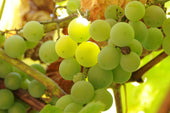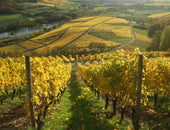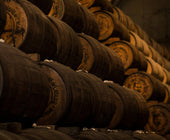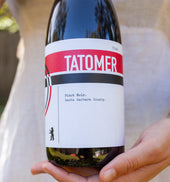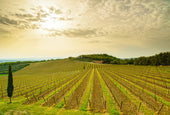
Old World Wine vs New World Wine

When it comes to wine, you've probably come across the terms "Old World" and "New World." But what exactly do these terms mean, and how do they impact the wines we enjoy? Let's uncover the differences and discover the distinct characteristics that make each style unique.
New World vs Old World Wines: What’s the Difference?
Old World wines refer to those produced in countries with long-standing winemaking traditions, predominantly in Europe. Think of classic wine regions like France, Italy, Spain, and Germany. These countries have been perfecting the art of winemaking for centuries, and their wines are often characterized by elegance, subtlety, and a strong sense of terroir.
On the other hand, New World wines come from regions outside of Europe, including countries like the United States, Australia, New Zealand, Chile, and South Africa. These regions have a more recent winemaking history and often embrace a more innovative and exploratory approach. New World wines tend to be fruit-forward, bold, and expressive, reflecting the unique characteristics of their respective terroirs.
In terms of taste and flavor, Old World wines showcase more earthy and nuanced profiles. For example, French wines from Bordeaux or Burgundy often exhibit complex flavors of cherry, black currant, and subtle herbal notes. Italian wines like Chianti or Barolo might present flavors of ripe red fruits, leather, and dried herbs. German Rieslings offer vibrant acidity, minerality, and notes of green apple and petrol.
On the other hand, New World wines tend to be fruit-driven and boast bolder flavors. California Cabernet Sauvignon may display ripe blackberry and cassis notes with hints of vanilla from oak aging. Australian Shiraz can be bold and rich, with flavors of blackberry jam, chocolate, and black pepper. New Zealand Sauvignon Blanc bursts with tropical fruit, citrus, and vibrant acidity.
Each Old World country has its specialties. France is renowned for its diverse offerings, such as Bordeaux blends, Burgundy Pinot Noir, and Champagne. Italy is celebrated for its Sangiovese-based wines, like Chianti and Brunello di Montalcino, as well as iconic regions like Barolo and Amarone. Spain delights with its Tempranillo-based wines from Rioja and bold Garnacha from Priorat.
Many popular grape varietals originate from Europe. Europe has also had a long standing history in developing hybrids or making crossings that have become famous such as Cabernet Sauvignon. Meanwhile, the other great Bordeaux grape, Merlot, is also a crossing, again of Cabernet Franc and an obscure, barely planted variety called Magdeleine Noire des Charentes.
Old World Wines also follow strict and historical guidelines that must fall within the standards of appellations that were developed in each region to express “terroir” and quality.
Among the New World countries, the United States shines with its Napa Valley Cabernet Sauvignon, Oregon Pinot Noir, and rich Chardonnays from California. Australia gains recognition for its powerful Shiraz from Barossa Valley, while New Zealand wows with its vibrant Sauvignon Blanc and elegant Pinot Noir from Marlborough.

Old World Wine Examples
French Bordeaux
Chateau Lafite Rothschild Pauillac 2020
Chateau Troplong Mondot Saint-Emilion Grand Cru 2020
Chateau Smith Haut Lafitte Pessac-Leognan 2020
French Champagne
Dumenil by Jany Poret Champagne
Vincent d’Astree Eclipse Champagne Extra Brut
Billecart-Salmon Rosé NV Champagne
Italian Wine
Silvio Grasso Barolo DOCG 2018
Poggio Nibbiale "Tommaso" Sangiovese Toscana 2017
Spanish Wine
Carlos Serres Gran Riserva Rioja Tempranillo 2012
Altanza Gran Reserva Rioja 2015

New World Wine Examples
Wines from the United States
Materra Napa Valley Midnight Red Blend 2019
Cakebread Napa Valley Chardonnay 2021
Turley Cinsault Bechtoldt Vineyard Lodi
Andrew Will Yakima Valley Cabernet Sauvignon 2019
Australian Wine
Yalumba Y Series Australia Shiraz 2019
Vasse Felix Filius Margaret River Cabernet Sauvignon 2019
New Zealand
Kuranui Marlborough Sauvignon Blanc 2021
Chile
Sideways Casablanca Valley Pinot Noir 2019
South Africa
Rustenberg Cabernet Sauvignon Stellenbosch 2019
Rustenberg Stellenbosch Chardonnay 2018
In conclusion, Old World wines embody tradition, terroir, and a sense of history, while New World wines offer innovation, fruit-forwardness, and a taste of exploration. Both styles have their merits and can provide exceptional drinking experiences. So, whether you're a fan of the refined elegance of Old World wines or the bold expression of New World wines, the choice is yours to savor and explore. Cheers to the diverse world of wines!







